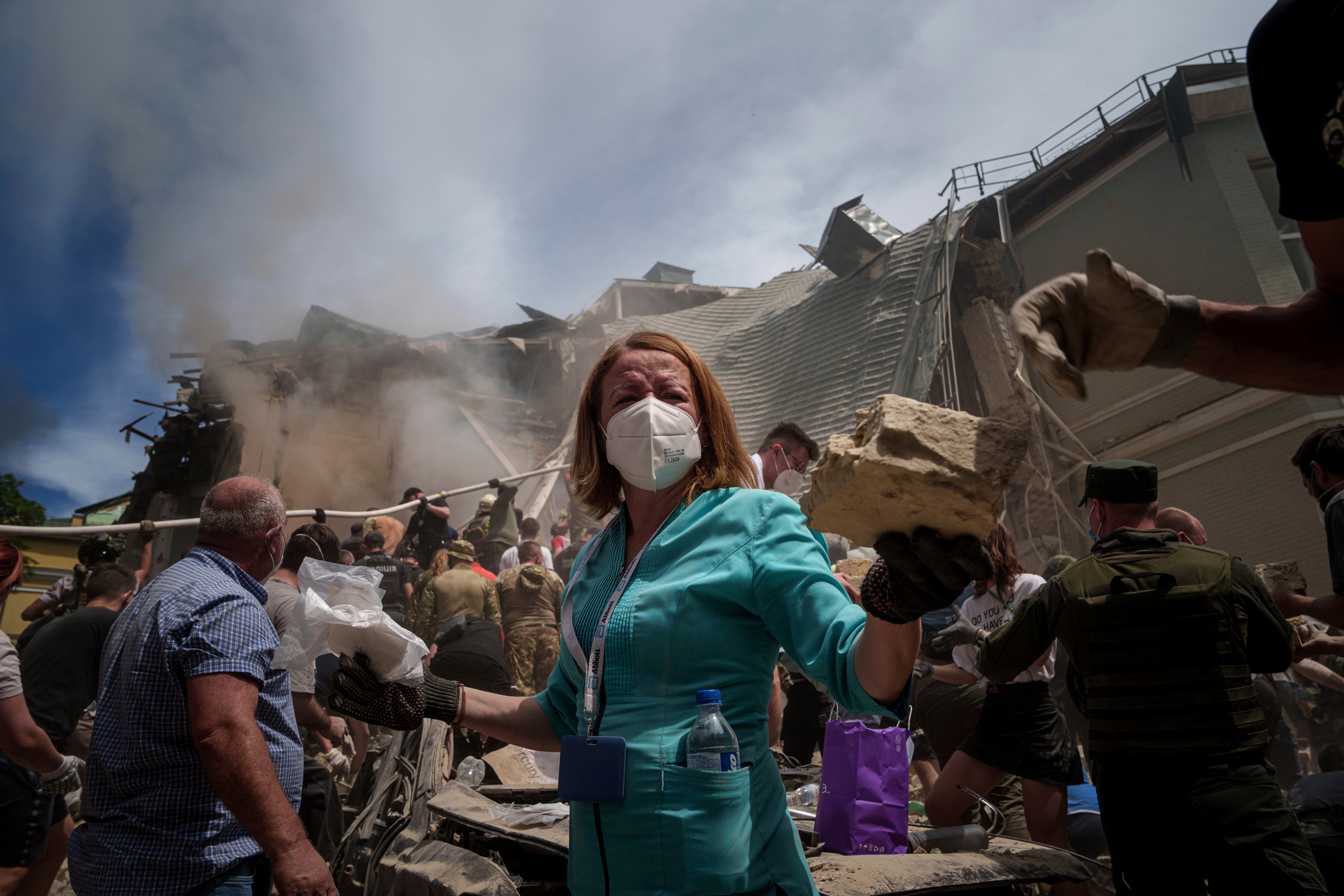One of Ukraine’s greatest war challenges is being met on the streets of Kyiv

When one man saw the military patrol handing out draft notices on the outskirts of Kyiv, he sneaked into a nearby shop. Another refused to stop for the officers. Others, however, complied quietly.
Although the men are gradually accepting Ukraine’s increased mobilization efforts to increase troop strength more than 28 months after Russia’s invasion, they are less ready to fight than before, says a conscript officer with the call sign “Fantomas.”
“As far as I know, most of the people in the queues (at the draft boards) right now are people who want to get some kind of exemption (from military service),” said the 36-year-old, who was recently accompanied by Reuters on a draft patrol in the Ukrainian capital.
The war veteran is at the forefront of efforts to double conscription despite waning public enthusiasm for military service, while military analysts say renewing troop levels is one of Kyiv’s biggest battlefield challenges.
President Volodymyr Zelensky lowered the draft age from 27 to 25 in April and signed a reform of the mobilization process that came into force in May. It requires men under 60 to renew their personal data at draft boards or online.
Although recruitment figures remain shrouded in war-related secrecy, some politicians and military officials said the changes, which include a campaign to increase voluntary recruitment, had put mobilization efforts back on track after two months.

The Ukrainian military told Reuters in a written statement that conscription more than doubled in May and June compared to the previous two months, but did not provide exact figures.
Spokesman Bohdan Senyk described this as a “positive trend”. The average age of the mobilized soldiers remained unchanged at around 40 years.
Strengthened by long-delayed Western aid, Ukrainian forces have been fighting for months to hold their ground against the slow advance of Russian troops in the east.
Many exhausted soldiers are desperately waiting for replacements after more than two years of virtually continuous service, with no clarity on when they will be discharged from an army of about a million men.
Asked about the figure of 200,000 additional soldiers mentioned in a German newspaper, Roman Kostenko, secretary of the parliament’s National Defense Committee, estimated that the army could recruit such a number of soldiers by the end of the year if the process continued at the current pace.
This could enable Ukraine to consider laws to demobilize part of the troops, but the Interior Minister warned that this could weaken the front if such a step were taken without adequate replacement of the troops.
Mathieu Boulgue, a defense analyst at the Center for European Policy Analysis in Washington, said the 200,000-strong estimate was encouraging, but the more critical task was training them and properly deploying them to the front lines.
Ukraine must “invest human capital intelligently and efficiently where it is needed. Because just as you can get anyone to drive a truck or clean toilets, you cannot get effective soldiers so easily,” he said.
Russia, meanwhile, is recruiting around 30,000 soldiers every month for its war effort but is suffering “very high” losses, a senior NATO official said on Tuesday, adding that Moscow lacks the ammunition and troops to launch a major offensive.
Since the restructuring of the mobilization regime, some conscription offices have struggled to cope with the influx of men trying to register or update their data by the July 16 deadline.
“More people are coming than we can accommodate,” says a deputy head of the draft board where Fantomas works. “Sometimes the processing takes until 1 p.m. at night.”
The official, who asked not to be identified, echoed Fantomas and said a “very, very large” proportion of men are seeking an exemption, but insisted they are on the right track.
“We fulfill the tasks assigned to us. I wouldn’t say 100%, but not bad.”
Reports of corruption in the draft and social media footage of scuffles between recruiters and citizens dampened public sentiment ahead of the rule changes in the spring.
In an April poll commissioned by public broadcaster Suspilne, around 50 percent of Ukrainians said they thought the mobilization was going poorly and 60 percent said they had a negative perception of the conscription offices.
In view of public opposition, legislators refrained from enforcing stricter penalties against conscientious objectors as part of the legal reform.
Fantomas, who was injured in eastern Ukraine last year, said 70 percent of his interactions with people he approaches on the street are positive.
He and other military officials said conflicts like those captured on film are rare, often taken out of context and exploited by pro-Russian accounts to discredit recruiters, but are successful in dampening enthusiasm for the armed forces.
He admitted to being attacked once while on patrol, but said he refused to fight back for fear of being caught on camera.
“The one part where I defend myself would make it into a video, and that’s the only thing that would go viral.”




